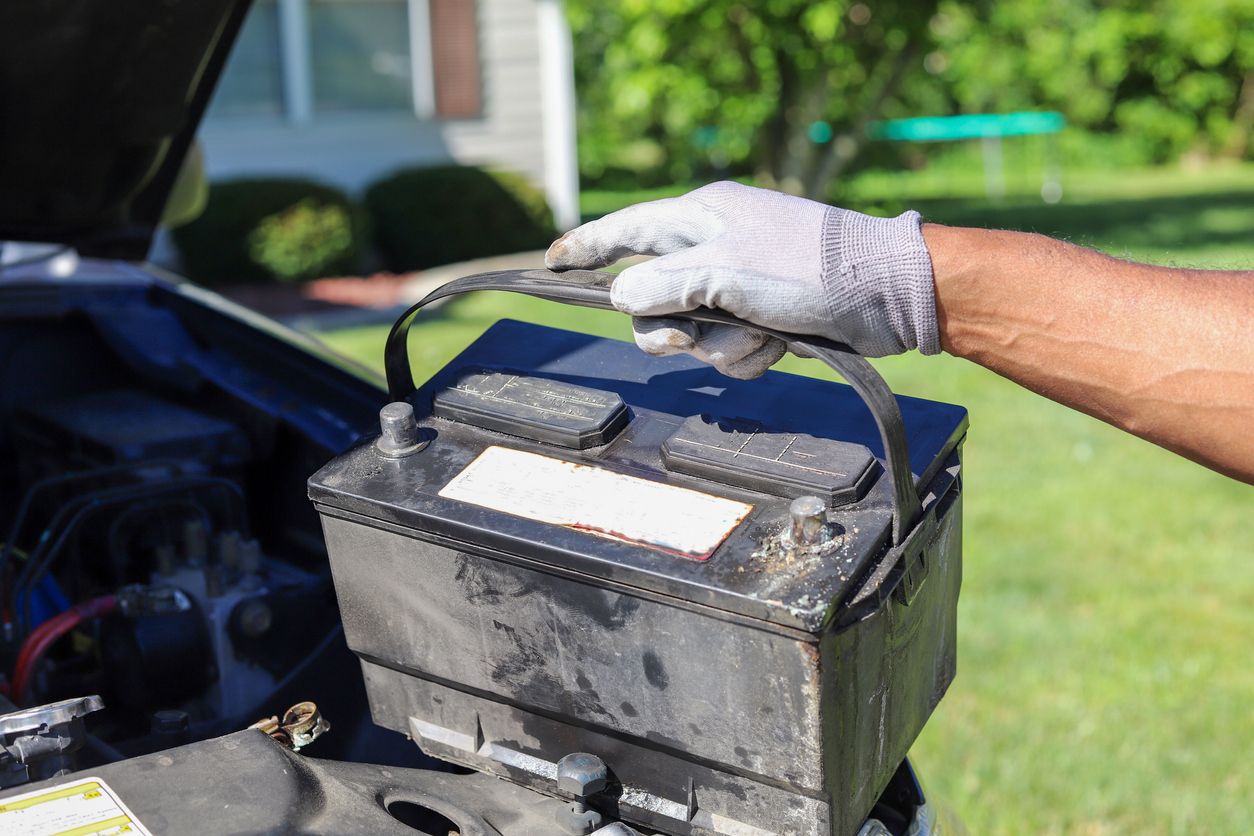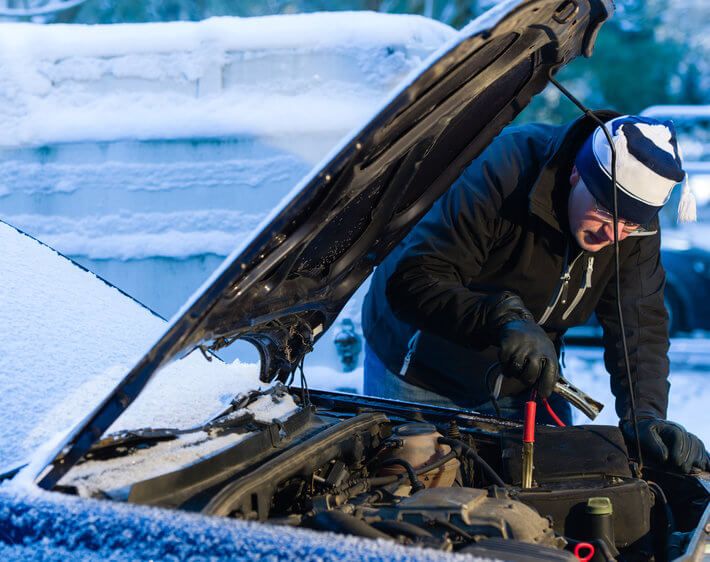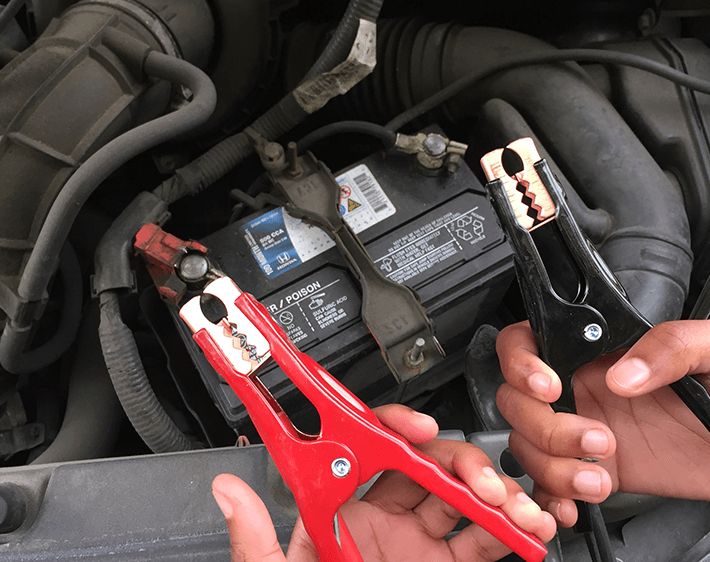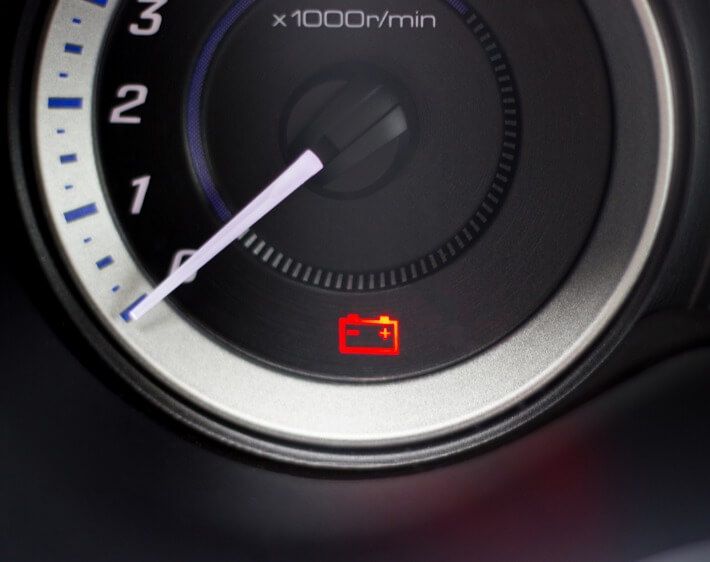Your car battery helps power up your engine, turns on your lights, supports your car’s computer, and more. These essential functions make learning how to disconnect and connect a car battery valuable.
Installing a new battery incorrectly may permanently ruin your battery, destroy a module/computer, blow fuses, or cause physical injury. To learn how to safely connect a car battery, disconnect it, and jumpstart this essential component, continue reading.
Note: These steps are intended to be a general set of guidelines when performing the tasks listed below. Always consult your vehicle's owner’s manual prior to attempting any of these services. Some vehicles may require advanced tools to register the new battery, save the vehicle’s memory, or disable the vehicle’s high voltage system. Some vehicles may need a code entered to resume radio functionality after battery replacement. Some vehicles may have multiple batteries. If unsure, please consult your local professionals at Firestone Complete Auto Care and leave the rest to us.
How to Correctly Disconnect a Car Battery
1. Turn off Engine
The first step in learning how to correctly disconnect a car battery relates to safety. Start by turning off your engine and all electrical components. Once your vehicle is completely off, locate the battery.
Note: Never attempt to disconnect a car battery while the vehicle is turned on. Doing so could lead to car damage and bodily injury.
2. Gather Your Tools
You may need the following items before disconnecting your car battery:
- Gloves
- Safety Goggles
- Socket Wrench or Wrench Kit
3. Locate the Battery and Terminals
Many modern vehicles house their battery under the hood. However, some car manufacturers place them in the trunk. Consult your owner's manual if you have difficulty locating yours.
Now that you've found the battery, it's time to pinpoint the car battery terminals. The negative terminal is indicated by a negative symbol (-). The positive terminal is labeled with a positive symbol (+) and sometimes has a red plastic cover.
4. Disconnect Battery Cables
Safety Disclaimer: Ensure that your wrench doesn’t touch both terminals simultaneously. This can send electricity through your wrench.
The positive and negative battery cable ends each have a nut or bolt connecting them to their respective battery post. Your job is to disconnect both. However, DO NOT disconnect the positive terminal before the negative one. Doing so can cause an electrical short. Always disconnect the negative battery terminal first.
Here's what you need to do:
- Using your socket wrench, loosen the nut on the negative battery terminal and remove from the battery post.
- Set aside the cable — far away from the battery terminals.
- Repeat the above steps for the positive battery cable.
5. Loosen and Remove the Battery Harness
You’ll likely find a strap or bolt down wedge holding your battery in place. Loosen nut(s) with your wrench, and remove the battery hold down.
6. Remove the Car Battery
Now, it’s time to take the battery out, but be mindful of its weight. On average, car batteries weigh about 40 lbs. So, ensure that your legs are prepared for the lift. You'll also want to make sure the battery remains level when removing it from your vehicle. Doing so can help prevent battery acid from sloshing around. Then, set the battery down on a flat, dry surface.
How to Connect a Car Battery Correctly
Your negative and positive cables are a good distance from the battery terminal. Your battery is lying on a flat surface. And most importantly, you’re safe because you were careful when removing your car’s battery.
If you can check all those boxes, then you’re ready to learn how to connect a car battery correctly!
1. Clean Cable Contacts and Battery Terminals
Your replacement battery (or existing one if it’s still good) should not be installed until the cable contacts and terminals are corrosion- and debris-free. Follow the steps in this blog article to do it properly: How to Clean Battery Terminals with Stuff You Already Have
2. Install the New Battery
Now for the fun part: learning how to connect a car battery properly.
- Lift your new battery (remember to keep it level) and set it in the battery tray or compartment.
- Reinstall the battery hold down
- Reconnect and tighten the positive cable to the positive terminal.
- Reconnect and tighten the negative cable to the negative terminal.
Installing a new or existing battery may reset your car’s clock. Set yours back to the correct time, and then you’re done!
How to Connect Jumper Cables to a Car Battery
You never know when you may need a jump-start or when someone needs you to power back up their car. Neither scenario tends to happen at a convenient time. But at least if you know how to connect jumper cables to a car battery, the process can be over sooner rather than later:
- Attach the positive clamp (red or yellow) to the dead battery’s positive terminal. Ensure that the other nearby negative clamp (black) doesn’t touch the positive clamp nor any other part of the car or engine.
- Attach the clamp at the opposite end of the positive cable to the good battery’s positive terminal.
- Attach the negative clamp (black) to the good battery’s negative terminal.
- Attach the clamp at the opposite end of the negative cable to the bad battery’s negative terminal.
Time to Jump-Start
Once your cables are properly in place (and not hanging over any belts or pulleys that will rotate when the engine starts), it’s time to jump-start the car. Follow these steps:
- Start the good-battery car’s engine so it can give the dead battery some juice.
- Wait about 5 minutes before starting the bad-battery car’s engine.
- Allow the bad-battery car’s engine to stay on for 20 to 30 seconds to confirm it won’t stall.
- Disconnect the cables in the reverse order you connected them. (Note: As you disconnect the clamps, don’t let the negative clamps touch the positive clamps or any other part of the car or engine until all 4 clamps are removed.)
From jumpstarting your car to connecting and disconnecting the battery, we've got you covered. See if services are available in your area, and schedule your mobile appointment today!



